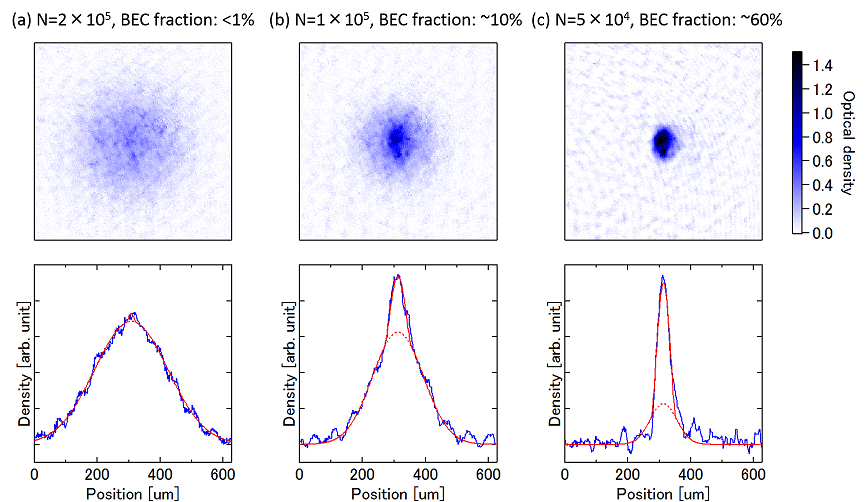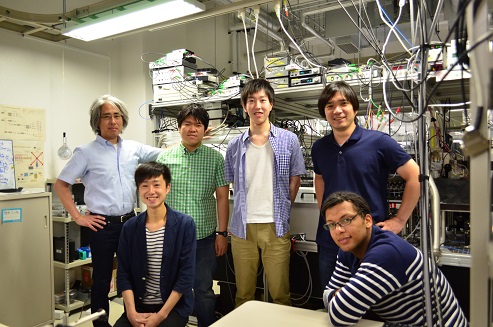
NEWS
全光学的手法によるRb原子のボーズアインシュタイン凝縮の生成に成功!!
We are happy to report our first observation of a Bose-Einstein condensate generated by all-optical means at the Institute for Molecular Science (IMS).

| Figure 1: Absorption images of the atomic cloud at different stages of the evaporative cooling, taken after 20ms free expansion. |
Atom:
87Rb, 5S1/2, F=1
Methods:
We first load a standard magneto-optical trap using a two-dimensional magneto optical trap as a cold atom source. Trapped atoms are then transferred into the crossed region of our optical dipole trap consisting of three horizontally-oriented beams at 1064nm. In our dipole trap, two weakly-focused beams crossing at a shallow angle provide a large trapping volume, and another tightly-focused beam crossing these two beams at a 45-degree angle provides strong confinement, which is necessary for efficient evaporative cooling. We evaporatively cool the trapped atoms into a Bose-Einstein condensate by ramping down the power of the trapping beams in ~5 seconds.
Results:
Absorption images of the atomic cloud are shown in Fig.1. Figure 1(a) shows a thermal gas while Fig. 1(b) indicates the onset of condensation evidenced by the bimodal density distribution. Further evaporation leads to a ~60% pure condensate with about 30000 atoms, as shown in Fig. 1(c). The resulting condensate is a spinor mixture distributed among three magnetic sublevels of the 5S1/2 F=1 hyperfine level.

| Our Rydberg team: (Clockwise from top left) Kenji Ohmori, Akira Tanaka, Shuntaro Takeda, Nobuyuki Takei, Christian Sommer, Michiteru Mizoguchi. Kuniaki Koyasu (former member) and Hisashi Chiba (Iwate University) do not appear in this photo. |
Posted: 8 June 2015
First observation: 29 May 2015








